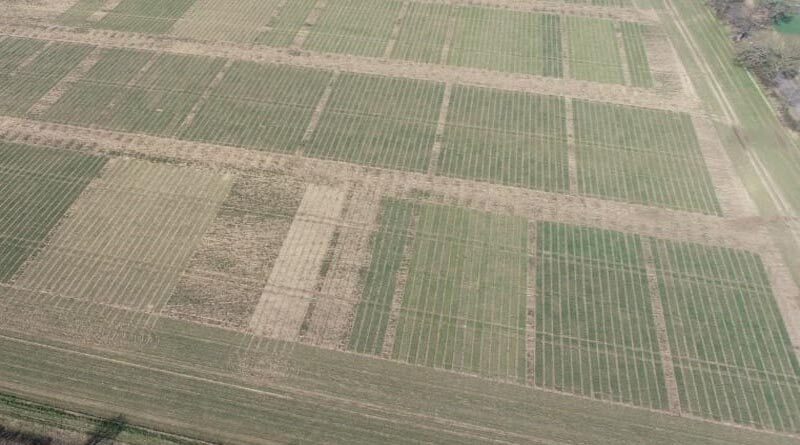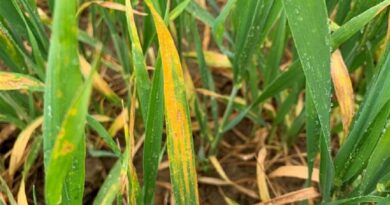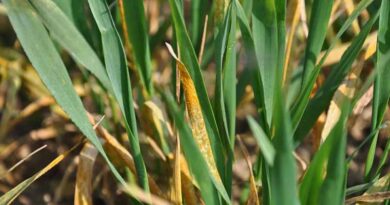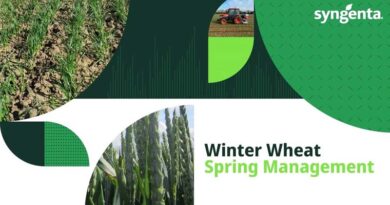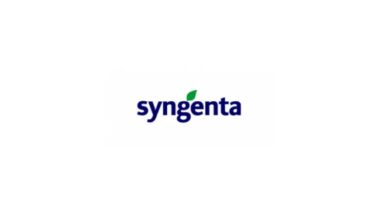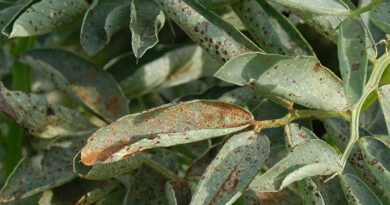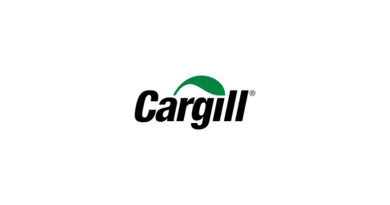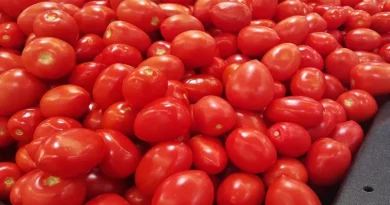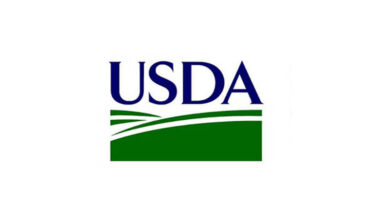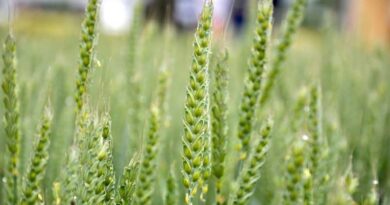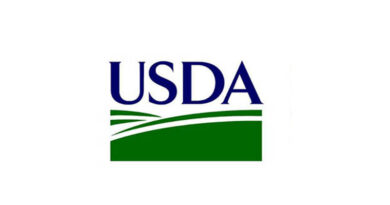Syngenta Mega Demos
29 March 2022, UK: New for 2022, the Mega Demo, hosted by Syngenta over 3 sites in the UK – Newark, Banbury and Rougham.
Today we are at the Rougham site in Suffolk, which was drilled in October. All three sites have the same varieties and programmes, also peas feature at some and not all.
Joe Bagshaw, Field Technical Manager talked through our winter wheat fungicide plots, which are looking pretty clean considering the mild winter we’ve had. Here we are comparing various fungicide programmes across 4 indicator varieties which are/are not prone to certain diseases: Septoria (Barrel), yellow rust (Skyfall), brown rust (Crusoe), and a fairly clean variety (KWS Extase). Across all four indicator varieties; and across all the varieties in the screen, there will be an untreated, a low input programme, best advice for T1 options, new chemistry options at T2, and programmes looking specifically at early yellow rust control, Septoria tritici and brown rust specific advice. We will also be looking at biostimulants alongside fungicide programmes and how they can help keep the crop healthy.
We will also have a range of fungicide programmes across our winter barley variety screen to help tailor disease control advice to varieties being grown on farm.
Matt Bull, Seeds Technical Expert then gave an overview of the rest of the wheat varieties in this trial. We have Saki (Cougar parentage) as a watchout for Septoria. Syngenta varieties include Graham the oldest variety on the Recommended List, with a treated yield in the East of 100%, excellent disease profile, prostrate growth habit, ideal for early drilling. Syngenta’s Gleam is the 2nd most popular variety on farm, with a consistent high yield, ideal as a 1st or 2nd wheat, good on light or heavy land, and performs well in every area. It is seedling susceptible to yellow rust, and adult plant resistance is moderate. SY Insitor is Syngenta’s next variety, this has the highest yield of our 3 varieties with excellent specific weight, good disease resistance to Septoria, a later drilled variety driven by its improved rooting system, builds a resilient crop.
We have a Syngenta candidate variety SY119122 which is a high yielding hard group 4 wheat with OWBM resistance. Good disease profile. Earlier drilling timing. And finally we have Wolverine, with the new genetic trait (BDV2 strain), comparing with other varieties without the strain.
Our new novel SDHI fungicide is being demonstrated here against competitor commercial products on Extase, Crusoe, Skyfall, Barrel (the 4 indicator varieties). We are looking for any visual differences between treatments and varieties.
Jon Ronksley, Field Technical Manager then discussed the benefits of applying the seed treatment, Vibrance Duo to winter wheat and comparing with a new seed treatment and an endophyte. Here we have 3 plots of SY Insitor treated with different seed treatments and Jon reiterated that it is vital to consider variety, drilling date, cultivation and also for seed/soil-borne disease such as microdochium and fusarium as these can affect plant establishment and yield. Treating with Vibrance Duo improves plant establishment and rooting. It is the market leading seed treatment. Even in extreme weather, Vibrance Duo is the best on the market and outperforms other seed treatments. With high nitrogen prices, Vibrance Duo treated varieties, such as SY Insitor, have better a rooting system enabling them to scavenge for nutrients further down the soil profile. Vibrance Duo fits in three key positions, it is excellent in a delayed drilling situation, good on light land, excellent in a 2nd wheat situation (although it has no take-all effect, but with better establishment and rooting it helps tolerate take-all). Jon says it will be interesting to see the effects of Vibrance Duo with endophytes… will these help with better establishment, rooting and possibly negate the need for high nitrogen inputs? Keep an eye out for the results at the end of the season.
Heading into the barleys with Joe Bagshaw where again we are repeating the fungicide work as in the wheats with similar fungicide programmes in the hybrid barleys and 2-row conventionals.
Ben Urquhart, Field Technical Expert Hybrid Barley walked us through the barley varieties starting with our hybrid barleys. Kingsbarn is the most popular hybrid across the UK with excellent consistency across regions and seasons. SY Thunderbolt was new last season and is very high yielding particularly in the west. Ben reinforced the importance of aiming to apply 3 PGR’s to all crops of hybrid barley and that Thunderbolt was one to prioritise. Belmont is high yielding, with a good specific weight, a good disease package, but be mindful of rust, so an appropriate triazole at T0. SY Canyon is our newly recommended semi exclusive hybrid with the highest specific weight of all 6-rows. SY Canyon has very good disease resistance which is reflected in the highest untreated yield on the current winter barley RL. This variety is indicative of great hybrid barley breeding Syngenta has. SY Nephin is an RL candidate variety with a fantastic spec weight, consistent yields, and a good disease package. We then have a couple of conventional 2-row varieties, Bordeaux & KWS Hawking for disease comparisons.
The next plots include our winter malting barleys. Craft the number one and biggest winter malting barley in the UK followed by Maris Otter then Flagon. We then have Electrum which is a companion variety to Craft. With high yields, good disease package, but weaker straw strength. Ben reiterated the need for 3 PGR’s. Early harvest variety, possibly before hybrids.
New to Syngenta is SY Vessel, the only non-GN winter variety for malt distilling. Requires low Grain N of 1.65%. This variety is National Listed, but not on the Recommended List. It has good disease package, but will need fungicides for mildew, rhyncho. Also another early variety for harvesting.
From our competitors stable we have KWS Ferris a 6-row with good yield, which has the YD2 tolerance gene…. We are looking at new traits in varieties and have 2 hybrid candidate varieties going to National Listing, these are exciting times.
Once again Jon Ronksley reconfirmed the use of Vibrance Duo in winter barley for both seed and soil-borne diseases. Growers need to remember that loose smut is not on the label, but sedaxane (in Vibrance Duo) has good activity in low risk situations as long as seed is tested or there is a low level of loose smut on the seed. If in higher risk, then Jon advises to add a loose smut active partner, such as Rancona i-Mix. One more thing to remember is that growers can’t use Vibrance Duo in seed crops for multiplication (certified seed), but they can treat farm saved seed. The barley trial is comparing Vibrance Duo with other market leading seed treatments, with and without a loose smut active partner.
Exciting news with Elatus Era now being approved on 8 crops in total. The Mega Demos will have winter/spring beans, winter oats, winter/spring linseed and on some sites, spring peas comparing Elatus Era with current market standards.
The winter beans at Rougham were eaten by birds, and this plot has not been drilled with spring beans which are just poking through.
The winter linseed is not looking its best right now at Rougham, but seems to be recovering after the cold spell.
We will keep you posted on these plots and their treatments throughout the season, and we hope to see you at one of our Mega Demos in the summer.

